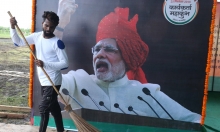India: is “Modicare” the answer?

AB-PMJAY, which has been dubbed “Modicare” by both the government and mainstream media in India, will replace previous programmes. It actually comprises two components: the Ayushman Bharat which is meant to create 150,000 health and wellness centres for the provision of Comprehensive Primary Health Care (CPHC), and the Pradhan Mantri Jan Aarogya Yojana (PMJAY) apparently designed to provide access to secondary and tertiary care for the poor and most vulnerable through a network of Empanelled Health Care Providers (EHCP).
Considering the fact that half a billion people are meant to benefit from this scheme, it should ordinarily be a welcome development. But the devil is in the details. While the scheme is projected to cost US$1.6bn annually, the amount set aside for the first-year budget of the scheme is just US$300m. This is not significantly larger than the amount set aside for health insurance in previous budgets. It is barely 27% of what the government used to bail out the country’s ailing sugar industry during the year.
It is also a mere 0.01% of the Indian GDP. Grossly inadequate funding of public health has been a major handicap. While the Indian constitution guarantees free treatment for all, the government spends just over 1% of GDP on health - 70% of all healthcare in India is provided privately and paid for out of patients' own pockets. So the rich who can afford the high charges of private hospitals access quality health services, whilst the poor are condemned to substandard health services.
A well-funded public health system is therefore important for improving health outcomes and reducing health inequities. But, Modicare is not geared in this direction. On one hand, it is obvious that it will be underfunded. On the other, the EHCPs include private providers who will be paid the market price for services provided.
The main beneficiaries of the scheme might thus turn out to be private health insurers and private health providers, and not the poor Indian people. It is also plausible to consider the scheme as an electoral gimmick, considering the timing of its launch as the country enters an electoral cycle.
Indeed, Sanjay Nirupam a leader of the opposition Congress Party said "this is going to be another scam. It will benefit only private insurance companies. The citizen of the country will realise later that it is nothing but an election gimmick."
What is needed in India today, for the achievement of quality health for all, is strengthening the public health services and not a model of privatisation of healthcare, which is essentially what Modicare represents.
In this regard, Jan Swasthya Abhiyan (JSA) an Indian coalition of civil society networks that forms part of the global People’s Health Movement (PHM) and is an ally of PSI, lists a range of public policy innovations which are urgently needed to ensure health and health care for all the people in India:
- public systems to ensure adequate supply of free medicines
- upgrading of Primary Health Centres and Community Health Centres
- community accountability of public health services
- strengthening of primary health care in rural and urban areas linked with District health systems, and
- establishment of Right to Health Care.

